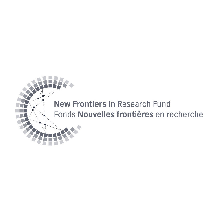Nouvelles
Thomas Gervais and his team develop a new device to make cellular exploration easier
The device was developed by a team made up of Thomas Gervais from Polytechnique Montréal, Mohammad Ameen Qasaimeh and David
Juncker from McGill's Department of Biomedical Engineering. It is based on using quadrupoles, or paired identical objects, two
"positive" and two "negative" arranged in a square in order to create a force field between them. Electrostatic quadrupoles are
used in radio antennae, and magnetic quadrupoles serve to focus beams of charged particles in particle accelerators.
Quadrupoles also exist in fluids. They have been described theoretically for decades, but this is the first time that they've
been fabricated in a lab setting.
The device is fabricated by etching four holes in a silicon tip, which is about 1 mm square. When the device is brought close
to a surface, it acts on it pretty much like a water jet vacuum cleaner would. Two apertures (the "plus" holes, or sources)
emit microscopic jets of fluid, onto the surface below and the two other apertures (the "minus" holes, or drains), immediately
suck them back into the device.
In the vacuum cleaner analogy, if the carpet is replaced by a slice of living tissue, or a layer of adherent cells, the device
can float over that surface to reach a desired target. It then simply sends out a stream of fluid with the chemicals needed to
stimulate, probe, detach or kill the cells, depending on the application.

A microfluidic quadrupole, formed by injecting fluids from two source apertures (the pluses) and aspirating back in two sink
apertures (the minuses). Fluorescent beads are used to trace the path of the flow much as iron filings can trace the path of
the magnetic field around a magnet.
The device can also create regions of smoothly varying chemical concentration called gradients. These gradients are the key to
studying many cellular processes such as how bacteria and other cells move about in the body. The researchers hope that this
new kind of device will find many applications in the in vitro study of a wide range of essential cellular processes.
The research was funded by: CIHR, NSERC, FQRNT, CFI and CRC.
Congratulations to Thomas Gervais and his team!
Find out more
An article about the device was recently published in the journal Nature Communications. For an
abstract: http://www.nature.com/ncomms/journal/v2/n9/full/ncomms1471.html
Source : News McGill University



